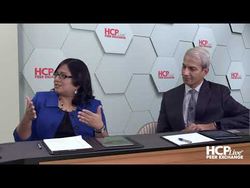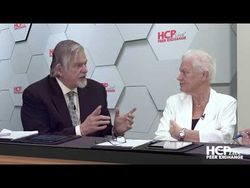Management of Beta Thalassemia - Episode 3
Beta Thalassemia Severity and Impact on Patients' Quality of Life
Peter L. Salgo, MD: There are 300 different genes. And 300 times 300.
Thomas D. Coates, MD: More than that actually.
Peter L. Salgo, MD: But ballpark anyway. It’s a large group and it’s a large spectrum, I would guess. How do these patients present or have their lives altered? And what is the spectrum that you see? Is it mild? Is it really bad? Is anybody really just sailing along with this and not have any trouble at all?
Sujit Sheth, MD: So if you have 1 normal β-globin gene, you can sail along and be perfectly fine. That’s what we call the trait. So the only implication for that is on future generations, should 2 people with the trait have a child together. So they have a mild anemia, very similar to iron-deficiency anemia but not quite iron deficient. They’re not iron deficient; we don’t have to treat them for that.
Peter L. Salgo, MD: Low risk but not critically?
Sujit Sheth, MD: Right, it’s mild. So a hemoglobin of 10 or 11, and they’re able to do everything pretty normally, maybe not run marathons very competitively but otherwise they do pretty well. And then you’ll have individuals who have both β-globin genes that are abnormal. And then, which kind of mutation they have determines the severity.
Peter L. Salgo, MD: So then let me ask the obvious question. Let’s take the heterozygous population aside and look at the homozygous. Is there a spectrum even among those?
Sujit Sheth, MD: Yes, there’s a wide spectrum amongst those. And that depends again, as Tom said, on the type of mutation. There are some mutations where you are able to produce a little bit of β-globin or a moderate amount of β-globin. And then there are other mutations that we call β0 mutations, where you don’t make β-globin at all. And those, if you have 2 β0 mutations, then you have the most severe form, and you’re transfusion-dependent from infancy onward.
You may have 2 β+ mutations and not require transfusions for 5, 10, 15, 20 years even. But you do have a moderate anemia and you have a lot of complications related to the ineffective erythropoiesis that Maria mentioned and the anemia itself.
Peter L. Salgo, MD: And all of this clearly—I mean I have kids. I have little kids at this point, 8 and 9 years old. The thought of my kids being anemic—the thought of my kids needing frequent transfusions, which is awful. How do kids deal with that? And what effect does β-thalassemia, as you go through your life, have on your life, in terms of the quality of your life?
Farzana Sayani, MD: So depending on the severity, as you hear, we’re talking about transfusions starting at anywhere between 6 months to 2 years of age. So that has a significant impact on the family: having to go in frequently for transfusions, and then, as we heard, the iron overload, so having to deal with medications. In the past we used to have various medications where it would be a subcutaneous injection—several hours—so the management—and now it’s much better with oral agents—but it’s the frequency of going in. These young babies, they’re very medicalized. There’s always the question of what future will I have. Many of our older patients, now in their 40s and 50s, were told that they would never make it past their 12th or 18h birthday, and they’re doing really well. But that does impact how someone grows and their quality of life; how they adjust through the stages of development: adolescence, young adulthood.
Peter L. Salgo, MD: It must be terrible, it must be terrible.
Farzana Sayani, MD: Yes.
Peter L. Salgo, MD: I know that kids are quite plastic, if you will, and they get used to a lot. But why should they have to, you know?
Sujit Sheth, MD: So this is something that falls under the spectrum of benign hematology, which I would absolutely not call it a benign disease.
Farzana Sayani, MD: Yeah, certainly.
Peter L. Salgo, MD: And when we say benign hematology, you mean it’s not cancer.
Farzana Sayani, MD: It’s not leukemia.
Peter L. Salgo, MD: It’s not a solid.
Farzana Sayani, MD: But sometimes it’s even worse, because it’s for life.
Maria Domenica-Cappellini, MD: Yes. And if I can comment on that.
Peter L. Salgo, MD: Whatever you like.
Maria Domenica-Cappellini, MD: Because, as you said, there are some countries where the prevalence of carriers is very high. And so the first step which really changed the nature of history of this disease is to perform proper screening of carriers and make the couple aware of the risk of having an affected child. So this is an educational process which is very important.
Going back to the point, the nature and history of the disease has definitely changed. A child who is born now in this era is definitely a completely different prospective compared to one—I was starting to deal with this patient in the ‘70s. I saw a child—children—dying at the age of 10 which is terrible—it’s our failure—you know, big bellies because of splenomegaly. So I saw all this, the history of these patients. And now they look quite well. Nevertheless, nevertheless, they are hospital-dependent. They have a lot of related problems.
Transcript edited for clarity.



